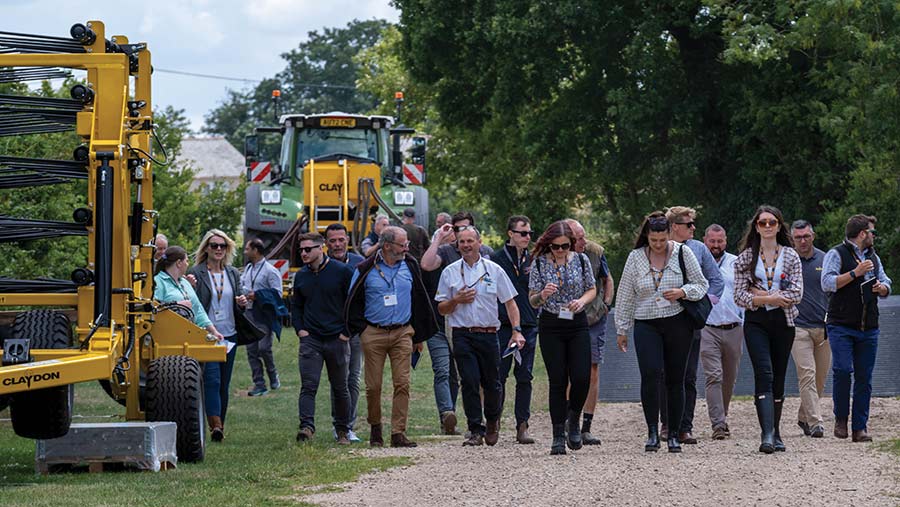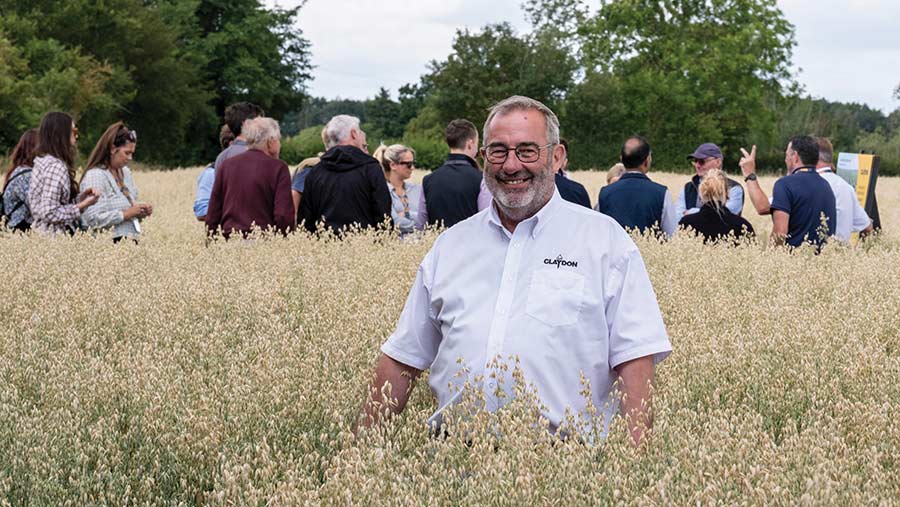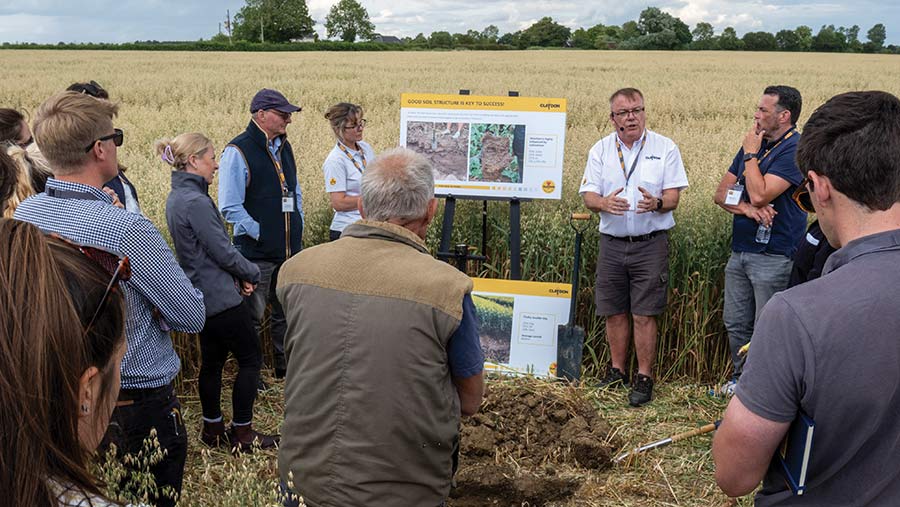Transition farm switch to strip-till boosts margins and soil
 © Jason Bye
© Jason Bye At a Farmers Weekly Transition project farm walk in Suffolk, Claydon Drill demonstrated how low-disturbance systems can boost soil health and improve margins.
Claydon’s 360ha Gaines Hall arable farm and equipment manufacturing site, near Newmarket, has improved dramatically since moving to low-tillage operations in the early 2000s.
See also: Tips on tackling five weed issues in no-till systems
But company founder Jeff Claydon explained that the move was originally down to plummeting wheat prices that had forced the farm to reduce costs.
“We couldn’t afford to plough, so created a subsoiler-type drill as a combination in 2003 then moved on to tine drills,” Jeff told about 50 visiting farmers and Transition Partners.
Benefits
- Cultivation time reduced to 26min/ha
- Fuel use dropped from more than 70 litres/ha to 16-18 litres/ha
- Establishment costs average £60/ha
- Average yields run at 10t/ha-plus
- Earthworms increased from 200/sq m to 700/sq m
- 52min/ha saving in labour

Jeff Claydon with visitors © Jason Bye
Figures show that cultivation time with the Claydon setup was just 26min/ha, compared with minimum-till 42min/ha and 110min/ha for plough-based systems.
Fuel use dropped from more than 70 litres/ha under the plough-based system to 16-18 litres/ha with the tine drills.
Establishment costs at the arable unit average just about £60/ha compared with a more typical average of between £150 and £170/ha.
And yet average yields run at 10t/ha-plus, well above the national average.
Export sales manager Simon Revell explained how structure and health of the heavy clay soil had been improved and why it underpinned the success.
The tine drill only disturbs a strip of soil ahead of the seed.
This strip-tillage protects beneficial soil bacteria, algae, protozoa and fungi, which would otherwise be exposed to ultraviolet light by the plough and destroyed.
These organisms hold nutrients that will fuel the growth of the following crop, reducing the need for inputs and cutting costs.
At Gaines Hall, soil organic matter is boosted by retaining crop straw, which is broken up and spread evenly across the surface with a straw harrow.
The organic matter from the straw supports worm populations that process it and add nutrients. Along with root matter from the previous crops, this helps retain the nutrients and structure of the soil.

Simon Revell demonstrating soil structure © Jason Bye
During the farm walk Simon dug a pit to show how the structure had benefited from the worm action Worm channels, which provide air spaces for root growth, were clearly visible.
The channels also aid water movement, promoting drainage and reducing run-off risks.
The Allerton Project policy director Dr Alastair Leake told visitors that min-till is economically and biologically beneficial.
Alastair explained earthworms had flourished at the project’s farm in Loddington, Leicestershire, increasing from 200/sq m to 700/sq m since moving away from ploughing in 1995.
The switch to min-till has seen an extraordinary transformation in heavy clay soil, according to Alastair.
What used to be impassable after rain is OK to walk on in trainers two hours after a downpour, he said.
The plough is only used where blackgrass is so bad we have had to start the process again, said Alastair.
The farm has also seen a 52min/ha saving in labour by switching from full cultivations. That equates to a man a month on a 300ha farm, he added.

